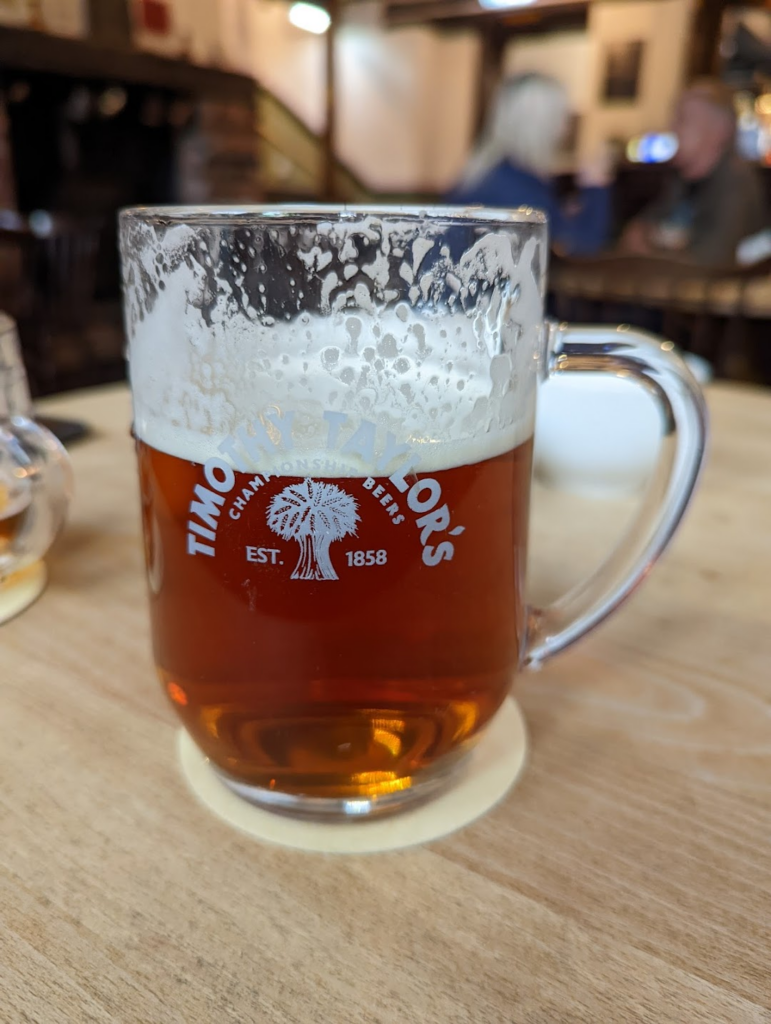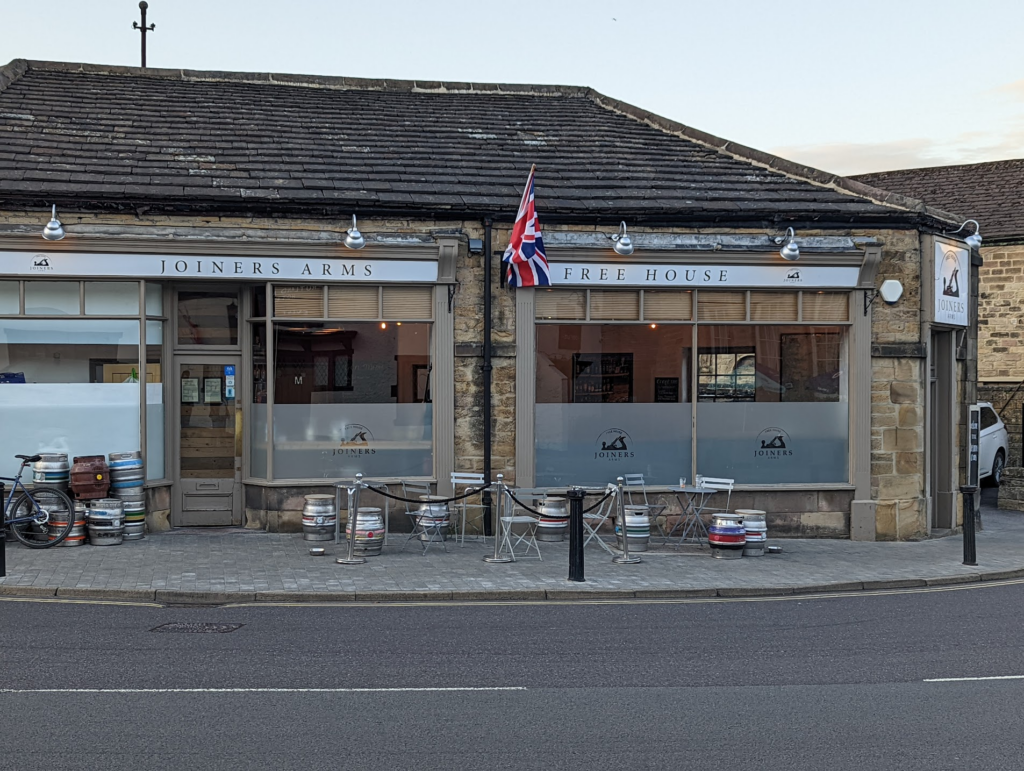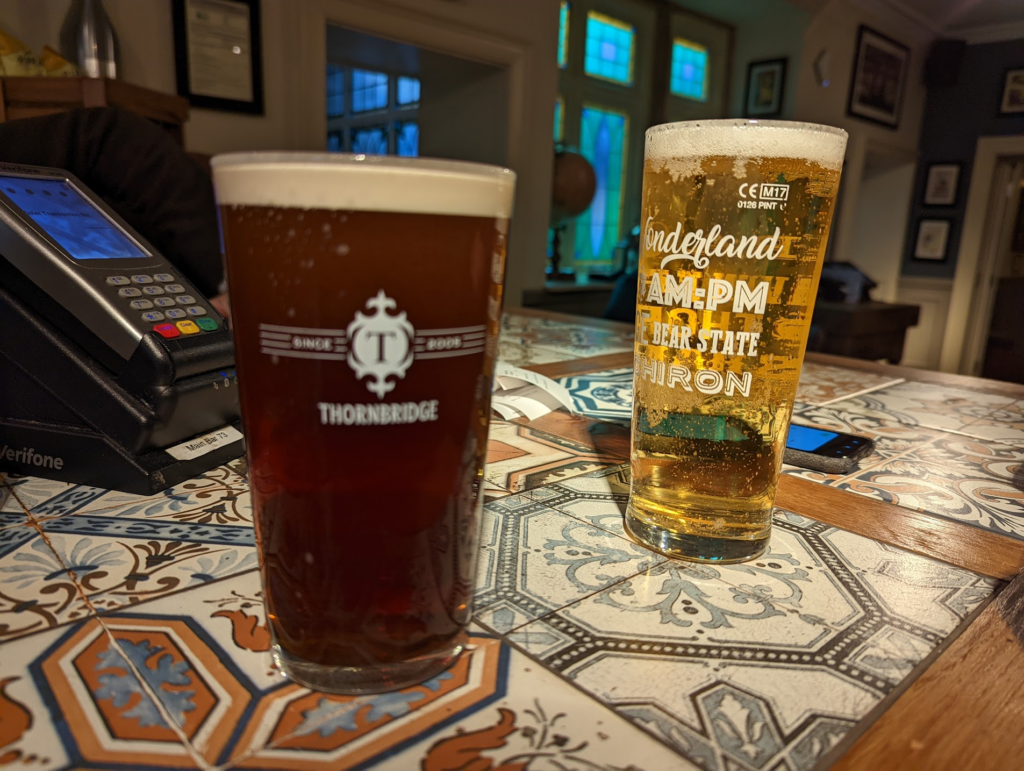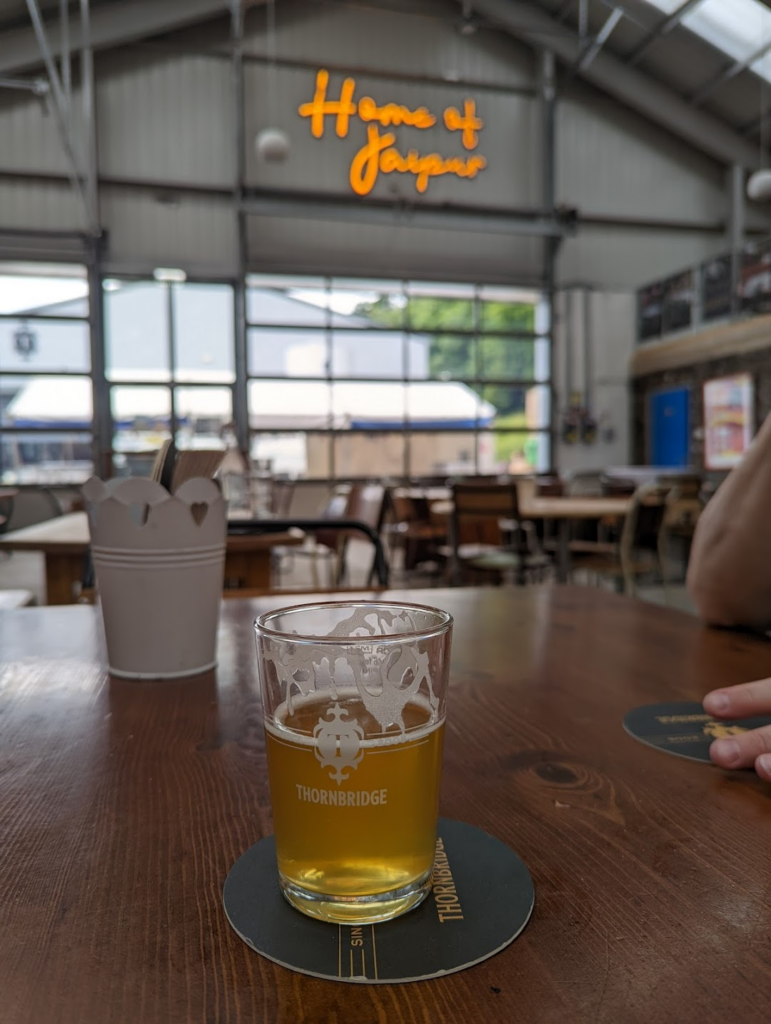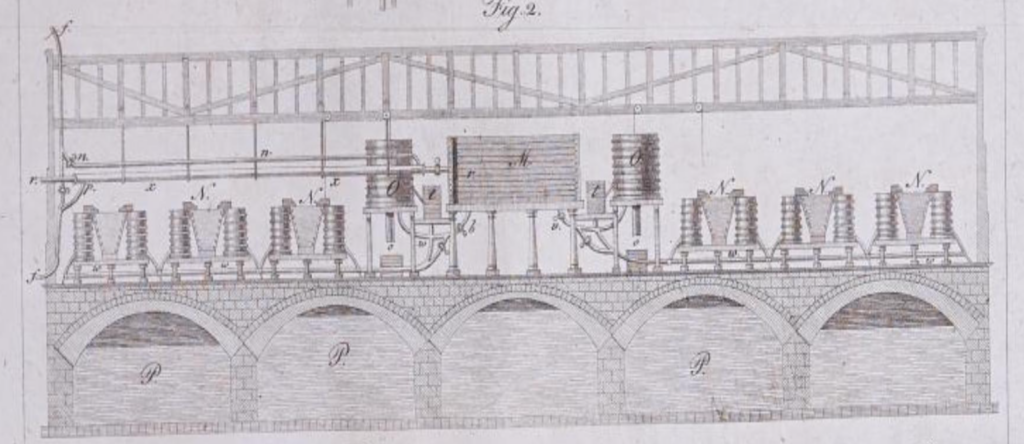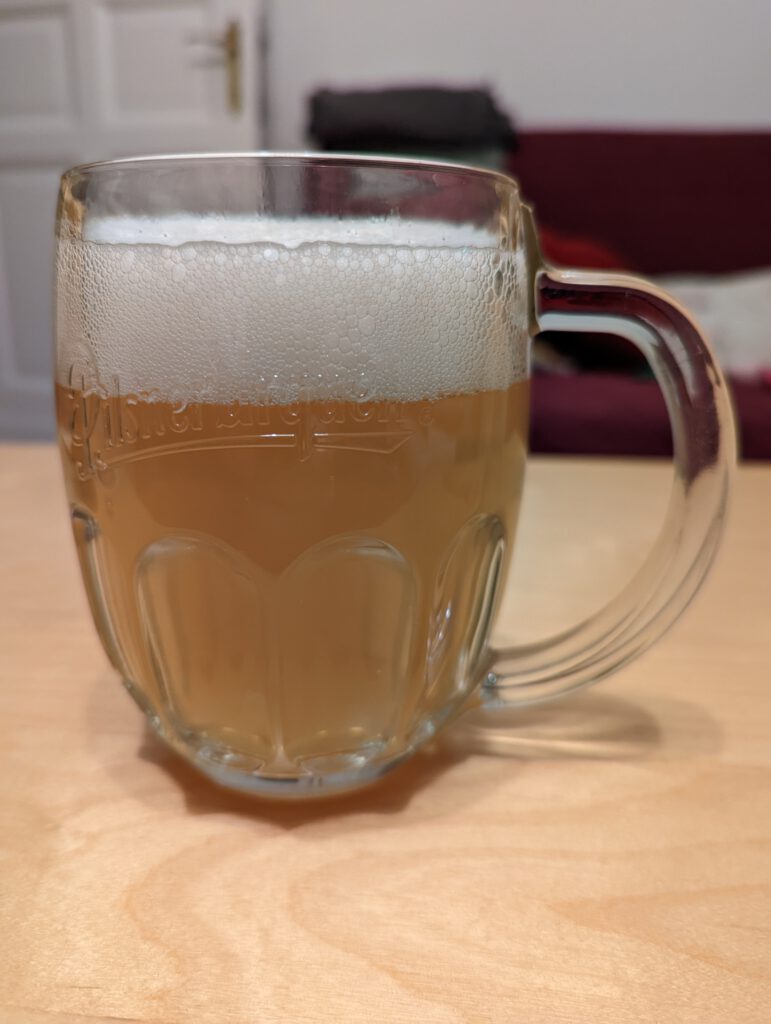June 11 to 16, 2022, my wife and I spent our holidays in Bakewell in the beautiful Peak District. We happened to try out quite a few local pubs, so this is my (obviously very subjective) guide to all the pubs in Bakewell we went to.
The Peacock Inn
Very focused on standard pub food. Three beers from cask, all from Peak Ales: Chatsworth Gold, Bakewell Best and Swift Nick. Well-kept but really just your average bitters and golden ales. When we were in Bakewell previously in 2016, they wouldn’t even let you sit down inside unless you wanted to order food. This has fortunately changed. Good for a quick refreshment in the sun.
The Queen’s Arms
In a stark contrast to the previous pub, you’re being greeted by a “sorry no food” sign. With parts of the floor carpeted, the whole length of the wall is lined by benches accompanied by tables and chairs. The whole pub gave me a rather simple and slightly Spartan impression. Even though it was relatively busy when we were there, it seemed quiet and relaxing, with some people reading their newspaper and enjoying a few pints. It seems to be a Marston’s pub, and had Pedigree and Old Empire from cask (besides a few others I don’t remember). Good for a quiet day.
Wheatsheaf
Despite its slightly sterile and pub-chainy look, we were unable to determine who actually owns this pub. I wanted to try Young’s London Original, but had to return it after I was served a pint of vinegar (the beer wasn’t taken off though), and went for Wainwright instead, which was fine but less bitter and hop-aromatic than what I remember it to be. The couple on the table next to ours also had food, but weren’t happy with their Sunday roast.
The Red Lion
Three cask beers on, with either Timothy Taylor’s Landlord or Boltmaker being on all the time. Boltmaker tasted great, though a bit on the sweet side. It was quiet when we went in, the overall atmosphere seemed fine, but it can apparently get very busy at times.
The Joiners Arms
This pub wasn’t around yet when we first spent time in Bakewell. With slightly hipsterish-looking panelling from reclaimed scaffolding boards on the bar and the walls, it had a micropub-like, very informal atmosphere. In total, they had 6 beers from cask, always rotating, but while we were there, at least 1 to 2 Thornbridge beers were on, accompanied by several keg taps (lager, craft beer, cider). No food other than the typical pub snacks like crisps and pork scratchings, but instead a good place to get to casually get to talk to people, both locals and tourists. The pub is also very dog-friendly, and lots of people walking their dogs seem to make a quick stop there for a pint.
A good place if you’re into trying new, local beers, or if you’re into craft beer.
The Rutland Arms Hotel
Essentially a hotel bar, it has 2 beers from cask, namely Jaipur and Lord Marples, as well as their Helles Lukas from keg. The whole hotel lobby/bar/restaurant has been completely redone since we were last there in 2016, apparently after a takeover from a hotel chain. All the beers were Peak Ales back then, and frankly, I’m glad they changed it because all casks beers this time were well kept, tasted great, and highlighted a local product to tourists (and there were several American tourists at the bar while were also there).
Thornbridge Taproom
A bit further out from the town centre, this is Thornbridge’s brewery taproom, with a fairly large range of their own beers from cask, keg and bottle or can. Everything we tried was well kept. If you’re hungry, you can order pizza which is all made from scratch in-house, and even though we didn’t have any, it smelled fantastic. As I learned, they take their pizza pretty seriously, got a proper pizza oven (though not wood-fired) and even ensure to buy the right flour.
By far the best place to try Thornbridge beers straight from the source!
The Manners
This is a Robinson’s pub, and it shows in the cask offering: Robinson’s Unicorn, Wizard, Trooper and Dizzy Blonde (despite the name, the visual branding has improved since 2016). The beer is perfectly fine, just not the most exciting to me. Instead, this pub is best visited for its food. By far the best pub food I’ve had in England. Our food highlights there were the honey roast belly pork, the steak & ale suet crust pie, the super juicy venison cheese burger, and of course the local specialty, Bakewell pudding.
A few remarks
If you’ve been to Bakewell before, you may have noticed that we have not covered all the pubs. This is because we didn’t go there specifically to put together a complete pub guide, and also there was one particular pub that we thoroughly did not enjoy last time, and thus didn’t return. As for drinks, I mostly mentioned cask beer because that’s what I’m interested in. If you want to drink keg beer or cider instead, the typical offerings are stuff like Carling, Coors, Fosters, Peroni, John Smith’s, Guinness, Strongbow (& Strongbow Dark Fruits), etc. You get the idea. Some places (like the Manners or the Joiners Arms) also have craft beer on keg.
When comparing the state of Bakewell pubs in 2016 with 2022, I have to commend those who have expanded their offerings: back then, we couldn’t find a single pub that served Thornbridge beers (it’s literally brewed a few hundred metres down the road!), save for the Thornbridge taproom itself, which was just a bit of a lounge and a small bar underneath some of the brewery offices. Nowadays, you will find multiple local places happily serving a fairly wide range of Thornbridge beers in excellent condition, and Thornbridge brewery itself now has a massive and very popular taproom, all of which are great improvements. And there’s even a micropub-ish free house in the town centre that brings rotating taps to the town that have clearly been missing before.

